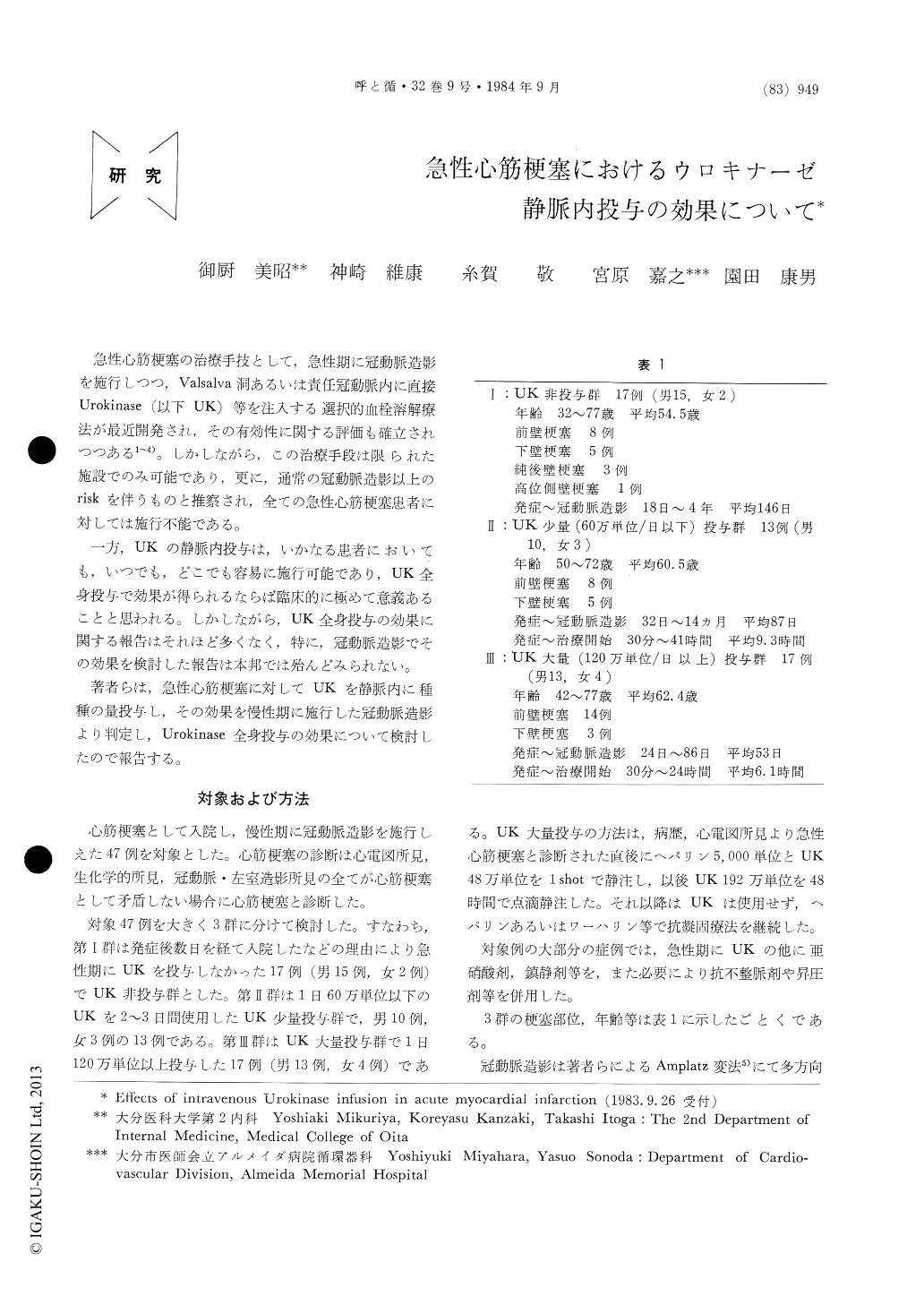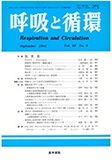Japanese
English
- 有料閲覧
- Abstract 文献概要
- 1ページ目 Look Inside
急性心筋梗塞の治療手技として,急性期に冠動脈造影を施行しつつ,Valsalva洞あるいは責任冠動脈内に直接Urokinase (以下UK)等を注入する選択的血栓溶解療法が最近開発され,その有効性に関する評価も確立されつつある1〜4)。しかしながら,この治療手段は限られた施設でのみ可能であり,更に,通常の冠動脈造影以上のriskを伴うものと推察され,全ての急性心筋梗塞患者に対しては施行不能である。
一方,UKの静脈内投与は,いかなる患者においても,いつでも,どこでも容易に施行可能であり,UK全身投与で効果が得られるならば臨床的に極めて意義あることと思われる。しかしながら,UK全身投与の効果に関する報告はそれほど多くなく,特に,冠動脈造影でその効果を検討した報告は本邦では殆んどみられない。
The effects of intravenous infusion of Urokinase in patients with acute myocardial infarction were assessed in 47 patients by the coronary angiography at the chronic stage.
The patients were devided in 3 groups. 17 patients (group A) were not received Urokinase infusion, 13 patients (group B) were intravenously infused the small dose of Urokinase (within 600,000 u/day) and 17 patients (group C) were treated by the high-dose intravenous infusion of 1,200,000 u/day. The occluded coronary artery reopened at the chronic stage in 35.3% of group A, and in 30.8% of group B similarly.
In contrast, the high-dose intravenous Urokinase infusion was successful in 11 of 17 patients (64.7%). Especially, the treated infarct vessels within 6 hours after the onset were reperfused at the chronic stage in 9 of 11 patients (82%). There was no serious complication except for one patient with stomach cancer. It may be concluded that: in a high percentage of cases, the high-dose intravenous infusion of Urokinase results in the restoration of the blood flow in an infarcted coronary artery.

Copyright © 1984, Igaku-Shoin Ltd. All rights reserved.


